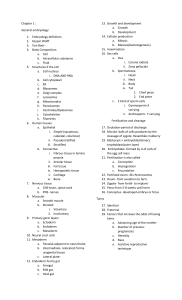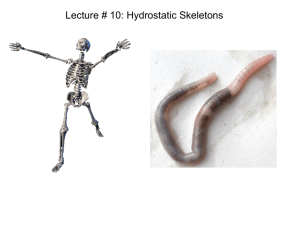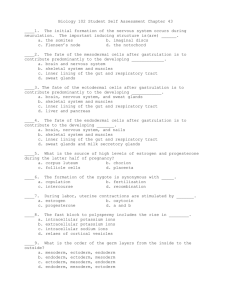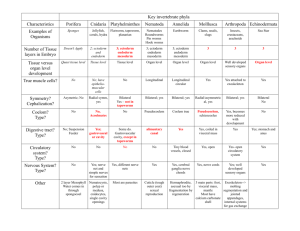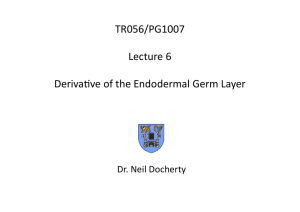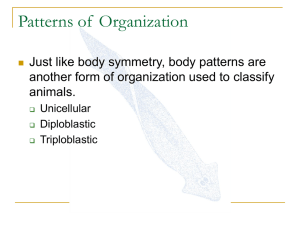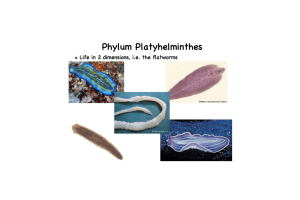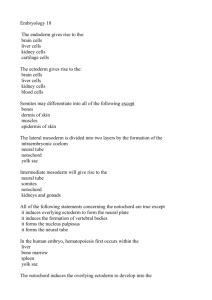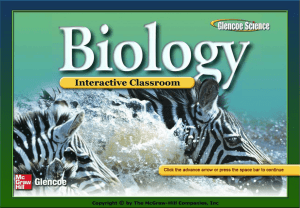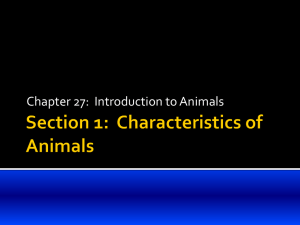Notes and Study Guide for Midterm 1 Read Textbook Chapters 1, 11
advertisement
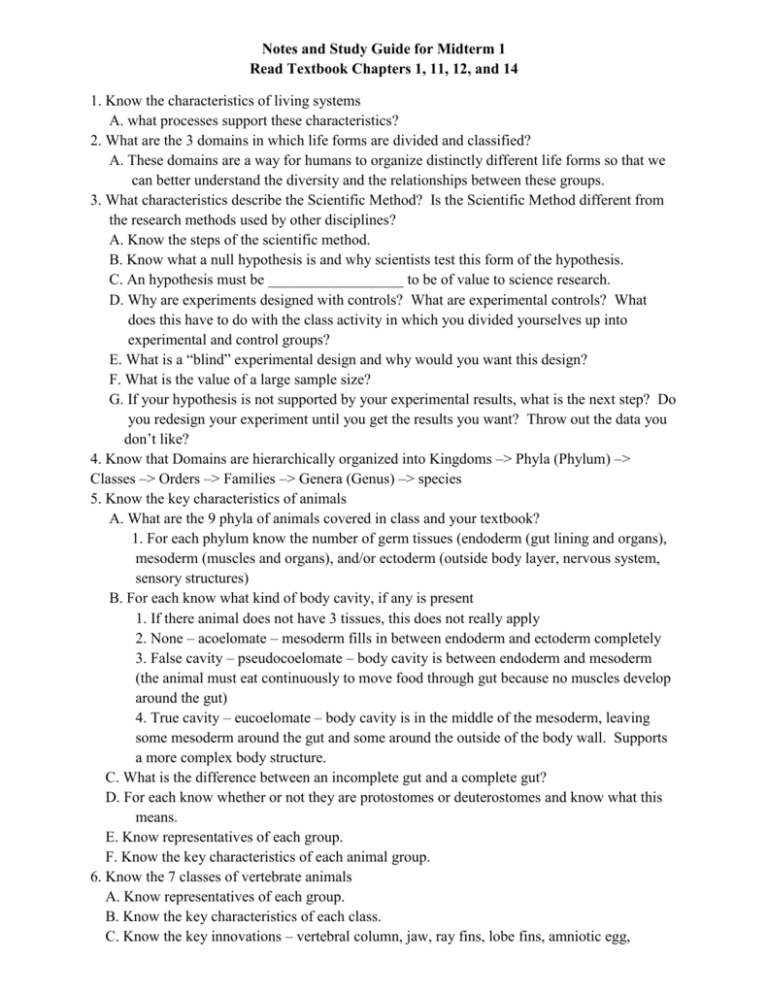
Notes and Study Guide for Midterm 1 Read Textbook Chapters 1, 11, 12, and 14 1. Know the characteristics of living systems A. what processes support these characteristics? 2. What are the 3 domains in which life forms are divided and classified? A. These domains are a way for humans to organize distinctly different life forms so that we can better understand the diversity and the relationships between these groups. 3. What characteristics describe the Scientific Method? Is the Scientific Method different from the research methods used by other disciplines? A. Know the steps of the scientific method. B. Know what a null hypothesis is and why scientists test this form of the hypothesis. C. An hypothesis must be __________________ to be of value to science research. D. Why are experiments designed with controls? What are experimental controls? What does this have to do with the class activity in which you divided yourselves up into experimental and control groups? E. What is a “blind” experimental design and why would you want this design? F. What is the value of a large sample size? G. If your hypothesis is not supported by your experimental results, what is the next step? Do you redesign your experiment until you get the results you want? Throw out the data you don’t like? 4. Know that Domains are hierarchically organized into Kingdoms –> Phyla (Phylum) –> Classes –> Orders –> Families –> Genera (Genus) –> species 5. Know the key characteristics of animals A. What are the 9 phyla of animals covered in class and your textbook? 1. For each phylum know the number of germ tissues (endoderm (gut lining and organs), mesoderm (muscles and organs), and/or ectoderm (outside body layer, nervous system, sensory structures) B. For each know what kind of body cavity, if any is present 1. If there animal does not have 3 tissues, this does not really apply 2. None – acoelomate – mesoderm fills in between endoderm and ectoderm completely 3. False cavity – pseudocoelomate – body cavity is between endoderm and mesoderm (the animal must eat continuously to move food through gut because no muscles develop around the gut) 4. True cavity – eucoelomate – body cavity is in the middle of the mesoderm, leaving some mesoderm around the gut and some around the outside of the body wall. Supports a more complex body structure. C. What is the difference between an incomplete gut and a complete gut? D. For each know whether or not they are protostomes or deuterostomes and know what this means. E. Know representatives of each group. F. Know the key characteristics of each animal group. 6. Know the 7 classes of vertebrate animals A. Know representatives of each group. B. Know the key characteristics of each class. C. Know the key innovations – vertebral column, jaw, ray fins, lobe fins, amniotic egg, feathers, fur and mammary glands, placenta. What adaptations or traits enabled animals to live on land? D. How do monotremes, marsupial mammals and placental mammals differ? Which one are we? 7. Know the 5 major groups of plants covered in class and described in your textbook. A. What is a plant? What are some challenges plants have? How do they deal with these? B. Know the key innovations of plants as they became adapted to land and more successful – vascular tissue, seeds, flowers and fruits. What is the importance of these? C. Know the life cycles of bryophytes, seedless vascular plants such as a fern, gymnosperms, and angiosperms. Know the difference between sporophyte and gametophyte and which of these generations is dominant in each of the 5 major plant groups we covered in class. D. What is a pollen grain? – sporophyte (parent tissue on outside), male gametophyte on the inside (which produces sperm) E. Know the plant adaptations for living in a dry terrestrial environment. F. Know representatives of each of the plant groups and their key characteristics. G. Know the structures of a flower and why the flower has caused angiosperms to become such a successful plant group. 8. What are the key characteristics of organisms in the Kingdom Fungi? A. Know that fungi are more closely related to animals than to plants. B. Understand what a hypha (hyphae) is and what the mycelium is in fungi. C. Know the basic steps of the fungus life cycle and why it is odd. D. Know why fungi are important to humans. E. What is a mycorrhizae? Why is this an important symbiotic relationship with plants? F. Know that fungi cannot do photosynthesis and make their own food – that they are heterotrophs and must digest other organisms to feed themselves. 9. Know how to define a population and population ecology. A. Know the difference between a community and an ecosystem B. Know the three population dispersion patterns and examples of each C. Know the difference between exponential population growth and logistic population growth D. What are some density dependent factors that limit population size and what is meant by this term? E. What are some density independent factors that limit population size and what is meant by this term? This may be where we stop for the first midterm. F. What is meant by sustainable resource management? What is meant by an ecological footprint? G. What are some different life history patterns? How are life tables and survivorship calculations useful in understanding these life history patterns? What trade-offs are there for species that follow these different life history strategies? H. Longevity and aging can influence a population’s age structure. How is studying the age structure useful in predicting the future growth or decline in population size? I. Why is the present rate of human population growth possible? Looking into the future, what are likely to be some challenges that result from our exponential population growth?
